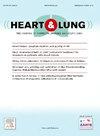直接口服抗凝剂与维生素K拮抗剂对左室血栓治疗的影响
IF 2.6
4区 医学
Q2 CARDIAC & CARDIOVASCULAR SYSTEMS
引用次数: 0
摘要
本研究比较了接受直接口服抗凝剂(DOACs)或维生素K拮抗剂(VKAs)治疗左室血栓(LVT)的患者颅内出血(ICH)、缺血性卒中、短暂性脑缺血发作(TIA)和大出血事件的发生率。方法回顾性分析3152例接受LVT治疗的患者的索赔资料。两个队列在年龄、性别和相关合并症上完全匹配。主要结局是两组在12个月和24个月时脑出血、缺血性卒中、TIA和大出血事件的发生率。使用Kaplan-Meier法评估差异。数据分析使用R (Version 4.1, R Foundation, Vienna, Austria)。结果336例患者经配对后比较。年龄50 ~ 75岁占76.2%,男性占80.1%,高血压占77.38%,高脂血症占66.07%。12个月时,DOAC组和VKA组在脑出血(3/168 vs 2/168, p = 0.7)、缺血性卒中(22/168 vs 15/168, p = 0.2)、TIA (9/168 vs 3/168, p = 0.08)或大出血事件(25/168 vs 35/168, p = 0.1)发生率上均无差异。同样,在24个月时,DOAC组和VKA组在ICH (4/168 vs 4/168, p = 1)、缺血性卒中(26/168 vs 26/168, p = 0.9)、TIA (10/168 vs 4/168, p = 0.1)和大出血事件(36/168 vs 45/168, p = 0.2)方面也没有差异。结论doac似乎是vka的安全替代品,证实了它们在LVT治疗中的应用。然而,有必要进一步评价。本文章由计算机程序翻译,如有差异,请以英文原文为准。
Direct oral anticoagulants versus Vitamin K antagonists for left ventricular thrombus management
Background
This study compared the rates of intracranial hemorrhage (ICH), ischemic stroke, transient ischemic attack (TIA), and major bleeding events between patients receiving direct oral anticoagulants (DOACs) or vitamin K antagonists (VKAs) for left ventricular thrombus (LVT) management.
Methods
In this retrospective analysis of claims data, 3152 patients receiving treatment for LVT were identified. Two cohorts were exactly matched on age, sex, and pertinent comorbidities. The primary outcomes were rates of ICH, ischemic stroke, TIA, and major bleeding events between the two groups at 12 months and 24 months. Differences were assessed using the Kaplan-Meier method. Data was analyzed using R (Version 4.1, R Foundation, Vienna, Austria).
Results
336 patients were compared after the match. The majority were aged between 50–75 (76.2%), were male (80.1%), and had hypertension (77.38%) and hyperlipidemia (66.07%). At 12 months, there were no differences in the rates of ICH (3/168 vs. 2/168, p = 0.7), ischemic stroke (22/168 vs. 15/168, p = 0.2), TIA (9/168 vs 3/168, p = 0.08), or major bleeding events (25/168 vs 35/168, p = 0.1) between DOAC and VKA groups, respectively. Similarly, there were no differences at 24 months in ICH (4/168 vs. 4/168, p = 1), ischemic stroke (26/168 vs. 26/168, p = 0.9), TIA (10/168 vs 4/168, p = 0.1), and major bleeding events (36/168 vs 45/168, p = 0.2) between DOAC and VKA groups, respectively.
Conclusions
DOACs appear to be safe alternatives to VKAs, substantiating their use for LVT management. Further evaluation is nevertheless warranted.
求助全文
通过发布文献求助,成功后即可免费获取论文全文。
去求助
来源期刊

Heart & Lung
医学-呼吸系统
CiteScore
4.60
自引率
3.60%
发文量
184
审稿时长
35 days
期刊介绍:
Heart & Lung: The Journal of Cardiopulmonary and Acute Care, the official publication of The American Association of Heart Failure Nurses, presents original, peer-reviewed articles on techniques, advances, investigations, and observations related to the care of patients with acute and critical illness and patients with chronic cardiac or pulmonary disorders.
The Journal''s acute care articles focus on the care of hospitalized patients, including those in the critical and acute care settings. Because most patients who are hospitalized in acute and critical care settings have chronic conditions, we are also interested in the chronically critically ill, the care of patients with chronic cardiopulmonary disorders, their rehabilitation, and disease prevention. The Journal''s heart failure articles focus on all aspects of the care of patients with this condition. Manuscripts that are relevant to populations across the human lifespan are welcome.
 求助内容:
求助内容: 应助结果提醒方式:
应助结果提醒方式:


